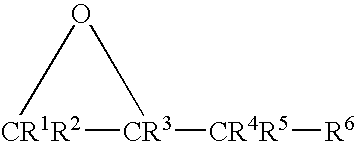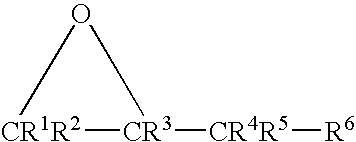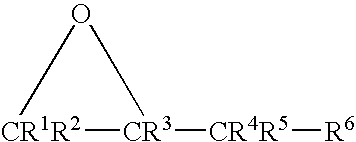Compositions and method for surface treatment of pigments
- Summary
- Abstract
- Description
- Claims
- Application Information
AI Technical Summary
Benefits of technology
Problems solved by technology
Method used
Image
Examples
example
(6)
[0028] 20 parts by weight of the powder produced in each of examples 1-5 was mixed with 9.0 parts by weight of a dispersant (Disperbyk 163 manufactured by Byk-Chemie) and 71 parts by weight of propylene glycol mono methyl ether acetate (PMA) followed by grinding to form a dispersion. The viscosity values, average particle sizes, and Ti values (thixotropic index) of the resulting dispersions of the powders produced in Examples 1-5 are shown in Table 1.
examples 7 and 8
[0032] Following the procedure of example 6, pigment dispersions containing 20% and 30% of a dispersant (Disperbyk 163) was prepared by using the pigment green which had been surface-treated in Example 2. The viscosities, average particle sizes, and chromaticity levels of the resulting pigment dispersions are shown in Table 3.
PUM
| Property | Measurement | Unit |
|---|---|---|
| Dispersion potential | aaaaa | aaaaa |
| Equivalent weight | aaaaa | aaaaa |
Abstract
Description
Claims
Application Information
 Login to View More
Login to View More - R&D
- Intellectual Property
- Life Sciences
- Materials
- Tech Scout
- Unparalleled Data Quality
- Higher Quality Content
- 60% Fewer Hallucinations
Browse by: Latest US Patents, China's latest patents, Technical Efficacy Thesaurus, Application Domain, Technology Topic, Popular Technical Reports.
© 2025 PatSnap. All rights reserved.Legal|Privacy policy|Modern Slavery Act Transparency Statement|Sitemap|About US| Contact US: help@patsnap.com



